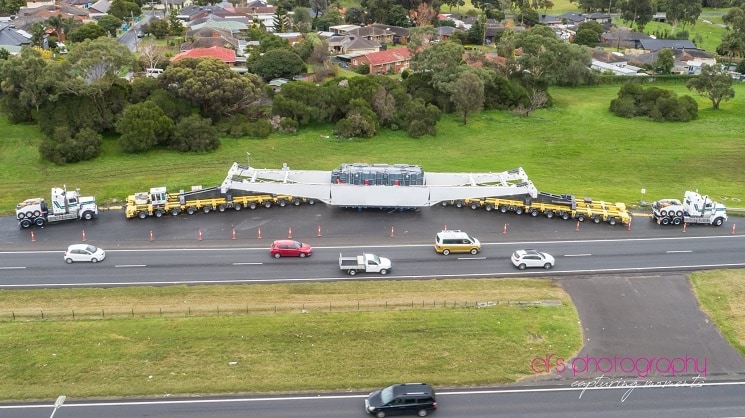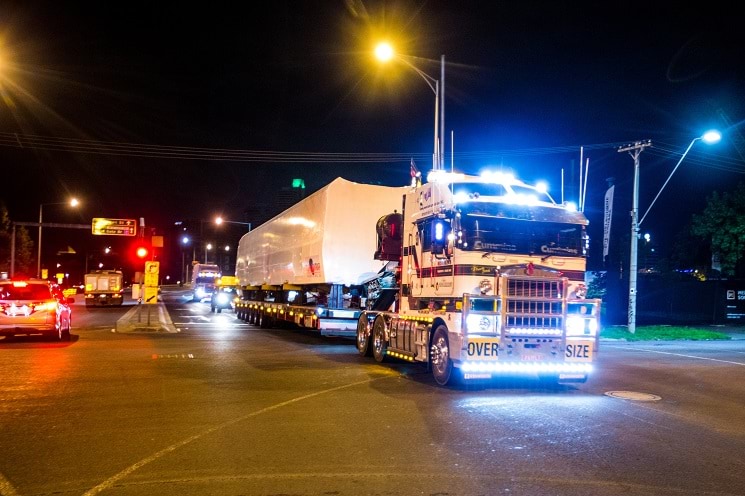A fee will apply to some of the heaviest oversize over-mass (OSOM) vehicles.
Why is cost recovery necessary?
The growth in Class 1 and 3 heavy vehicles is having a considerable impact on Victoria’s road and bridge network.
Repeated use of some structures by certain OSOM vehicles is shortening the life of network structures not originally built to carry such high mass.
Cost recovery will be applied to the wear imposed on certain structures on the Victorian road network. This will be achieved through the imposition of a fee.
Revenue raised will be used to renew and lengthen the life of bridges and structures on the state’s heavy vehicle network.
Who pays?
Not all Class 1 and 3 vehicles will attract a fee.
Your permit application will attract a fee if your vehicle is:
- A crane with axle masses greater than 12t; or
- A platform trailer with axle masses greater than 15t and assessed/classified as a Superload by DTP’s Superload team.
How does it work?
On applying for a permit from the National Heavy Vehicles Regulator (NHVR), you will be advised that an additional fee is payable.
You will be given the option to accept, reject or amend your permit at this point.
Should you accept, you will be required via the NHVR portal to:
- Submit written advice to the NHVR to prepare a quote.
- Pay a non-refundable $700 quotation fee.
DTP will then provide you with an estimate of the time it will take to prepare your quote.
What if I need to change my application?
Once a quote is issued, changes to the application can be made via the NHVR portal. DTP will advise you of updated timelines and any additional costs.
Changes to the application following an assessment will require a new application.
How long is my assessment valid?
The duration of the bridge assessment is specified on the permit. New assessments can be streamlined in the case of repeat journeys by the same applicant, vehicle and route. In such cases, the assessment may vary if a structure deteriorates or is upgraded.
When are fees applicable?
The new fee structure will be implemented from 1 June 2024.
Updated


